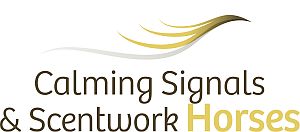Lectures & Workshops
You can invite Rachaël for lectures, workshops or combined educational weekends about Calming signals of horses, and Equine mental stimulation and scentwork. Enclosed a sum up of Rachaël lectures/workshops that evolve around Equine Calming Signals. To get more information on each lecture, do scroll down.
- Calming Signals of Horses – an introduction (part 1)
- Calming Signals of Horses – a sequel (part 2)
- Calming Signals of Horses in a work setting
- Horse Empowering (Re)Socialisation
- Addressing behavioural challenges with calming signals and scentwork (More information will follow suit).
If you are interested in combining lectures/worshops on equine calming signals & mental stimulation & scentwork, do have a look at suggested combinations under subchapter theme combinations.
Calming Signals of Horses – an introduction (part 1)
1-day theory with films and pictures or 1-day theory with films and pictures & observation sessions of horses
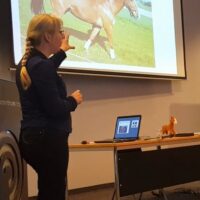
By watching numerous pictures and films (or pehaps live demonstrations) of domesticated horses reacting to stimuli in their environment, you will emerge in the fascinating world of Calming signals of horses. You will start to recognise them, and will see variations. From a horse being relaxed to a horse that is experiencing rising or declining tension. By recognising various behaviours and features of the horse, this day is a good practise to further sharpen your observation skills. After this day you are more astute to recognise at what tension level your horse is at. You will get tools on how to implement the knowledge of calming signals in your daily living and work with horses. And will be shown and practising how you can use calming signals yourself to further improve the relationship with your horse and your mutual understanding, your life and training. Some topics we cover:
Introduction
• Personal background
• Information on the study, how is it conducted, what are the parameters used.
• Information about communication, when are signals used to communicate and when not.
The Calming Signals
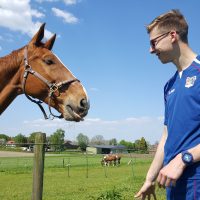
• What are calming signals?
• What do they look like?
• When do we see them?
• How does no, light or high tension play a role in relation to the calming signals?
• The calming signals are shown one by one on picture and film. (with also the comparison of the non-communicative options).
Tension is increasing
• How do calming signals relate to displacement activities and if tension rises further to stress signals.
• How can you tell, within several levels of tension, if the tension is increasing or decreasing.
• How does it look like when distance increasing signals are added in the picture
• A short biological explanation what stress does to the body
Applications
- How do we use this knowledge on calming signals
- Can we mimic the calming signals. Does our horse understands us better?
- Which calming signals can we use to help the horse decrease tension, or stay in a relaxed base.
This lecture is full of pictures and films to make sure you get a varied and broad spectrum of horses reacting to stimuli while experiencing no tension or various tension levels. Do you want to work with real horses? Contact Rachaël to discuss the extra possibilities.
Calming Signals – a Sequel (part 2)
1 day filled with films and pictures and practical working sessions with horses
During this day Calming Signals – A Sequel we dive deeper into the subject of Calming Signals. This lecture includes photos and films that were not covered on Calming Signals- part 1. During the day three theory sessions are alternated with three practical sessions, in which the horses are also invited to participate.
We start the day with a short refresher, in which we focus on the facial characteristics and behaviour of horses in their comfort zone and the many stages outside it (with new film material). After that, Rachaël covers the following topics:
- Shutting off: how does that look like. Several films for comparison are shown. we compare outward and inward gazing looks. We study the calming signals looking away, immobility and slowing down, and compare those to horses that shut off for a short moment versus a longer timespan in a passive state. Or these horses that shut off for a short and longer timespan when they are in a more active state.
- The Head Swing
- The predictive value of weight shift and gaze behaviour
- The distance increasing signals and how they relate to the calming signals. The aim is to be able to interpret the comfort or level of tension horses might experience when showing distance increasing signals.

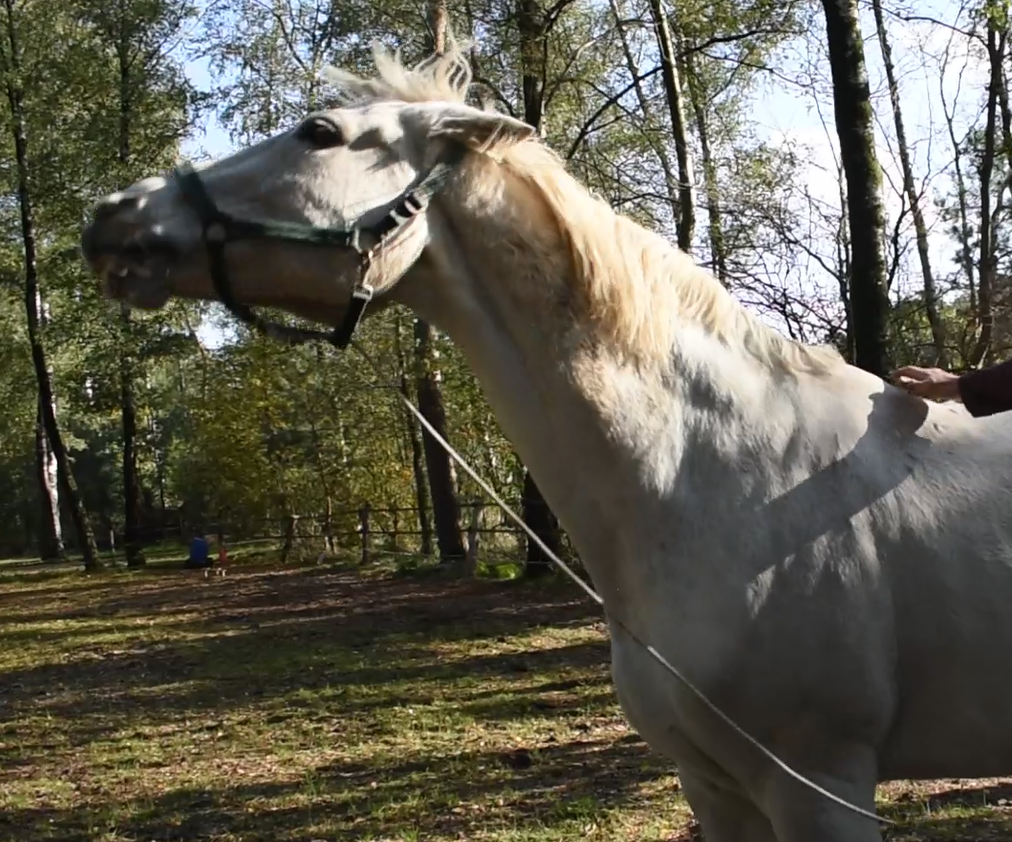
By going deeper into several films, the participant’s observation skills are challenged. The degree of predictability of a behavioural sequence is also practised. Can we start predicting behaviour?
During the practical sessions with the horses, the following themes are central:
- Observation of the horses
- How do I make calming signals to the horse myself?
- How do I guide another person to make calming signals towards the horse?

The aim is to give every participant a chance to participate in these exercises. If there are more participants in the group, it is possible that some of them are invited into the arena with the horses and others watch the sessions as spectators.
Of course, the starting point of this whole day is that both horse and human feel safe and comfortable and enjoy the various parts of the programme.
This day is a logical continuation of the lecture Calming Signals and accessible for those who have followed that day.
Calming Signals in a work environment
1-day filled with practical work
During this day Calming Signals in a work environment we leave the pictures and film clips behind and start interacting with the horses in arena’s, paddocks and pastures. Under supervision of Rachaël Draaisma we will conduct exercises, that have the following learning goals:
- Observation of the horses in various settings
- Practice making calming signals towards a horse
- Practice to help someone else make calming signals towards a horse
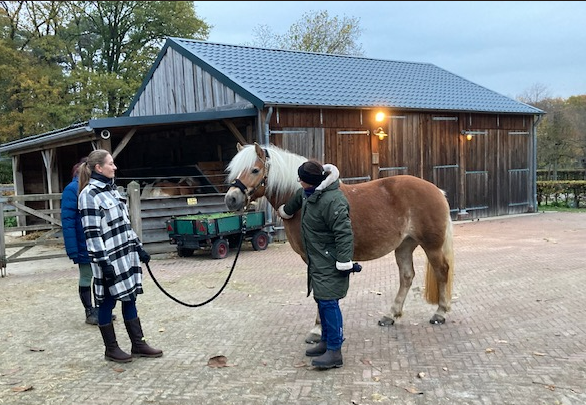
During the practical sessions in the midday, a work setting horse-human is set up. This work setting is determined by the organizer and has a direct link to his work and the participants who are invited. This might for example be:
- Multiple coaching’s sessions
- Groundwork with horses
- Lessons in various disciplines, like dressage, jumping, western or agility
- Mental stimulation & Scentwork with horses
- Other, namely…


In this work-setup attendants can immediately put in practice what they have learned in the morning exercises and thus apply it to their field of interest. Rachaël Draaisma acts as observator in the midday program and if needed apply suggestions for improvement. The organiser may choose to have a leading role in this midday program so he or she can fully represent their work of interest.
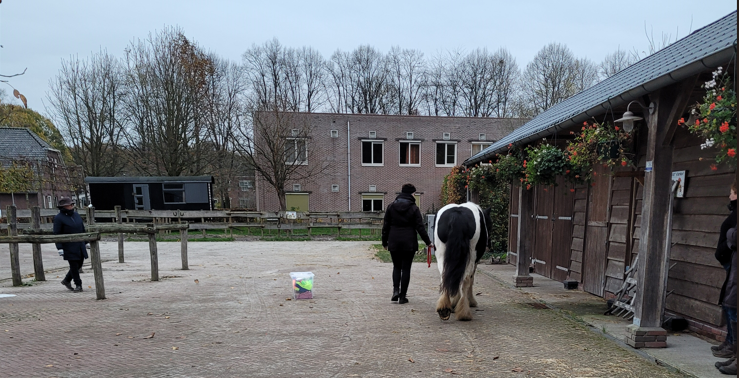
Obviously, the starting point of this entire day is that both horse and human feel safe and comfortable and enjoy the various program components.
This day is a logic follow-up from the Calming signals lecture and is only applicable for those who have already attended that day.
Addressing behavioural challenges with calming signals and scentwork
1 to 5 days filled with films and pictures and practical working sessions with horses
"Using tracking for a horse with separation anxiety, or a horse that is frequently startled. Resocialising a horse with people by using calming signals and tracking. These are just a few examples where you can use calming signals and/or tracking as a full carrier within a behaviour plan. In fact, a tracking exercise or a calming signal can be so much more than just a fun activity. (Although it remains fun!) They are full-fledged tools that can be used in very many variations at different times."
This day to days is all about the horse that has a behavioural challenge. How do we help that horse with calming signals and scentwork? To give you an idea of this, during the theory blocks, Rachaël shows film material of a number of horse-human combinations she has coached. The following behavioural challenges are covered:
- A horse with separation anxiety
- A horse that is reluctant towards contact with people
- A horse that frequently startles and runs away while riding outdoors
- A horse/dog resocialisation program

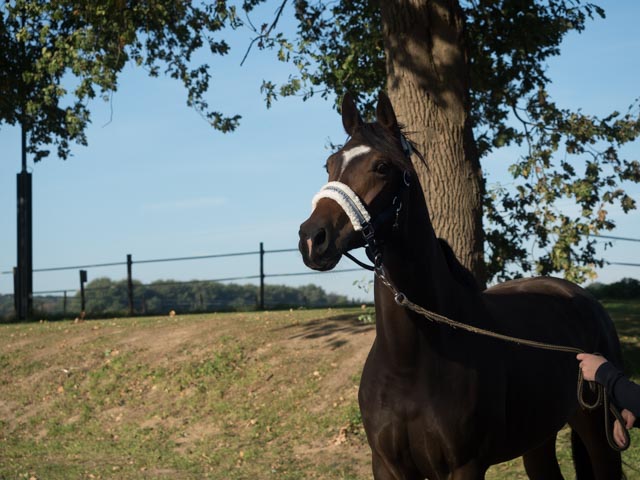
Topics discussed include:
- Which elements of scentwork do you choose for different challenges.
- How to turn these tracking exercises into a logical program that helps the horse step by step in its development.
- What is helpful, what is not?
- How do you use calming signals?
- What is the progression over time of these exercises.
- What do you take into account?
- What is helpful, what is not?
During the practical blocks, we make a start with some of the horses at home in the barn. We hear what behavioural challenges the horse is facing. Discuss a plan of approach together and perform the first exercise(s) during the practical blocks. Which are then discussed in class.
Using scentwork and calming signals methodically with a horse that has a behavioural challenge is not widely done. The focus of this day(s) is to change that and give you as a participant an idea and enthusiasm about the employability of scentwork activities and the use of calming signals. In that way you expand your toolbox by adding these activities in your current work and life with horses.
This day is very suitable for:
- Behavioural therapists
- Trainers
- Staff at equine rescue centres
- Horse owners interested in behaviour
- Horse owners who have a horse with a behavioural challenge
- Horse owners who want to know more about calming signals and scentwork
- Physiotherapists, osteopaths , manual therapists, ed
During this day, the focus is on application. This day is therefore only open to those who have already followed the days introduction to calming signals and tracking. These basics will not be repeated during this day or days. For an overview look at theme-combinations.
Horse empowering (re) socialisation
2- day’s filled with theory and practical sessions
These 2 days evolve around socialising and re-socialising horses. This may be:
- young horses you are going to start up,
- horses that need resocialisation because they show flight behaviour to specific or many stimuli around them.
- horses that will undergo a change in life, for instance traveling, moving house, going to competitions
- horses that have very little to no opportunities to explore and play in their life
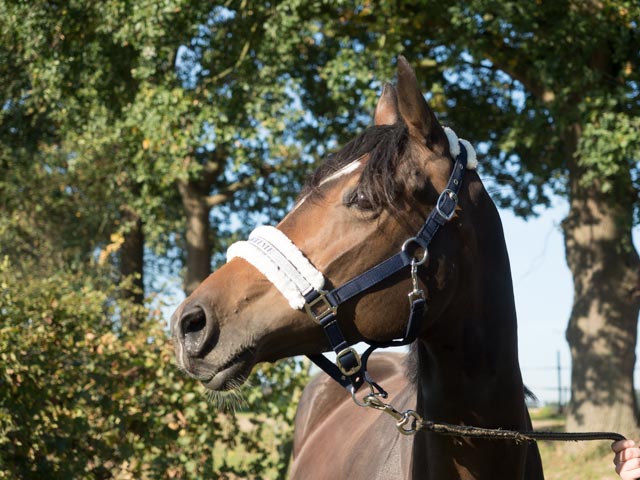
Program:
Day 1:
Morning program:
In classroom: Assessment of emotional state of horses. Looking at features and behaviours on a detailed level. How can we asses when they are in their comfort zone, when outside. If they experience tension, what level of tension is that? Many photos and films are being used to practice.
Goal: Set in a shorter time frame a baseline for assessing the horses wellbeing, motivation and tension level, in films and practical sessions of exploration and scentwork, we are going to see in the midday on Saturday and Sunday.
Lunch
Midday program:
In classroom: short introduction why horse empowering socialisation (HES) is so needed. Followed by what you need to know about the horse and owner before getting started in practice. Followed by
Practical sessions with horses:
With a different variety of horses we establish a good starting point for the horse empowering socialisation. With each horses we make a setting that starts and stimulates their exploratory behaviour. We will we doing that by using scentwork & building customised enriched environments.
In classroom: summary of the midday practical sessions.
Day 2:
Morning Program:
In classroom: Diving into the world of exploration and scentwork. I talk about the effect it has on the development of the horse, his behaviour and brain, How can you optimize exercises, what are pitfalls. How to use mental stimulation and scentwork as a primary tool when (re)socialising and training horses.
Lunch
Midday Program:
Practical sessions with horses
In classroom: summary of the midday practical sessions and take home messages.
When you have followed this weekend, you will:
- You have a good starting point on how to get started with HES with your own horse.
- You know the basic positive effects it has for your horse and you
- You know pitfalls you have to keep in mind and ways to expand the explorative behaviour of your horse
- Likely can’t wait to get started with your own horse.
General Information
Costs
For a full day: between 750,- and 900,- euro (excluding VAT) depending on the travel distance. Travel costs, sleeping accommodation and costs for food and drinks should be taken care of by the host.
Equipment needed
An overhead projector, a whiteboard or flip chart and a table and chair. The time table can vary, but never more than 8 hours per day, and ending no later than 6 pm.
When working with horses, these horses are at home at the venue the event is taking place. The number of attendants should be to that amount that the horses can handle them and viewers have good sight at the arena’s. The horse is always leading in the programs.
